- How to Tell if You Need Low Bridge Fit Glasses
- Learn How to Select the Right Pair of Low Bridge Fit Glasses
- Glasses for Low Bridge vs High Bridge Noses
- 3 Signs Your Glasses Don't Fit And How To Fix Them

Most glasses are made for average or high nose bridges. If you have a low nose bridge and are wearing standard glasses, a bridge that’s too tight may pinch at your nose and cause the frame to sit too high on your face. If the bridge is too large, you may be constantly having to nudge your glasses back up your nose. What’s the solution? Low bridge fit glasses! Other brands may call this type of glasses Asian fit glasses, universal fit glasses, low bridge glasses or low nose bridge glasses as well. Knowing how to measure your nose bridge and other facial features for glasses makes a huge difference in getting huge difference in getting custom glasses that are made just for you.
The nasal bridge is the bony part at the top of your nose, and it typically protrudes slightly. For those with a low nasal bridge, this area will be flatter. The position and shape of your nose bridge might not be something you’ve given much thought to, but it makes a big difference where glasses are concerned.
Low bridge fit glasses are designed for those with a nose bridge that’s level with or below their pupils. These glasses are also designed for people who have wider faces or high cheekbones. In addition to keeping your glasses from sliding down your nose, low bridge fit glasses also prevent the glasses from pinching your nose or touching your cheeks.
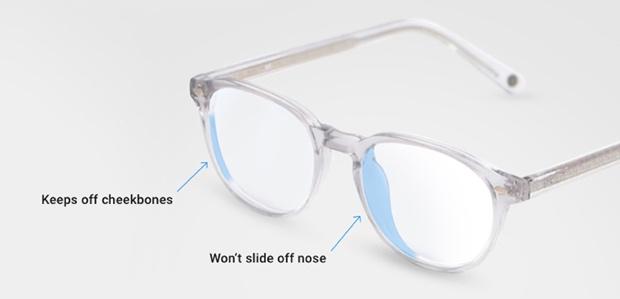
To determine if you need low bridge fit glasses, simply examine your nose. Look in the mirror or at a picture of yourself — a side profile gives you the best view. See if the bridge of your nose is high or low in comparison to your eyes. If the bridge is at or below the level of your pupils, the bridge width of the glasses should be approximately 16-18 millimeters. This is a low nose bridge. If the bridge is above the level of your pupils, the glasses' bridge width should be approximately 19-21 millimeters. This indicates a high nose bridge.
Use the bridge position to select low bridge or high bridge glasses. Low bridge fit glasses will have a bridge that dips below the brow line.
In addition to noting high or low bridge position, you should determine if your bridge width is narrow or wide. People with eyes close together tend to have a narrow nose bridge, whereas those with eyes set further apart usually have a wider nose bridge. If your nose is narrow, look for glasses with a 14-18 millimeter bridge. If it’s wide, choose glasses with a bridge that’s 18 millimeters or higher.
When it comes to glasses, one size doesn’t fit all, and if you’ve ever picked up a pair of off-the-shelf sunglasses or reading glasses, you’ll know how hard it is to find a pair with the right fit for your unique face. The “small, medium or large” designation for eyeglasses doesn’t always work for everyone. Instead, there are three different measurements (nose bridge width, width between temples and temple length), plus additional considerations like bridge position and face shape. Take all this into account to ensure you have the best fit for your face.
At GlassesUSA.com, we have a huge selection of high-grade eyeglasses and sunglasses, including a wide selection of Low Bridge Fit Glasses. Our affordable low bridge fit glasses combine exceptional quality, comfort and fashion for the best glasses you’ll ever own!
Shop Low Bridge Fit Glasses
Eyewear doesn’t come in a one-size-fits-all package. If you have a low nose bridge, you may experience a flatter surface near the top of your nose, while others have a more bony and protruding feature. Glasses made for those with an average or high nose bridge won't work well for those with a low bridge because they are not designed for your specific shape. If you have a low nose bridge and high cheekbones, you've likely never had glasses that sit correctly on your face. If you have owned a pair of glasses that mainly sit on your cheekbones instead of on your nose proper, you have probably experienced a lot of discomfort or been annoyed by the process of constantly pushing them up. The good news is that these days, low nose bridge glasses are becoming more readily available. Here are some quick tips to help you determine if you have the right fit:
Take a look at the numbers printed on a pair of frames you already own (usually on the inside of the temple). Typically, the middle number corresponds with the bridge measurement of the glasses. If the frames you're using are comfortable and don't slip, then you likely already have a pair that fits. Just take note of the middle number for future purchases.
Glasses that are not made for a low bridge won’t allow the individual wearing them to see properly out of the lens frame. Additionally, if you are not wearing glasses built for a low bridge nose, you may find yourself stopping everyday tasks to push your glasses back onto your nose. A low bridge fit frame will keep them sitting right where they should be.
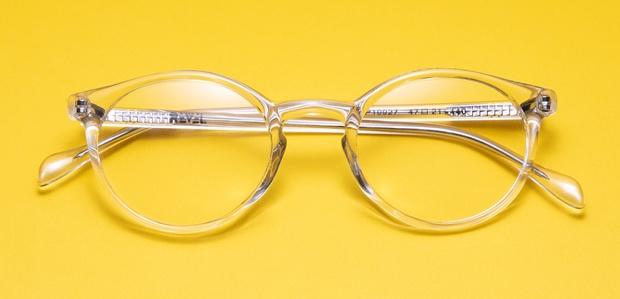
Look for the location of the bridge on a frame you are interested in. If you have a low bridge, look for plastic frames that have a curvier browline. It will help accommodate your nose bridge. Another difference to look for is how low the bridge (the middle of your frame) sits. If it comes up too high, it’s not the one for you. If it sits low and leaves a little space between the bridge and where it would sit on your nose, you’ve spotted the right frame. You can also go by measurement, and should generally look for a bridge in the 14-16 mm range.
Trying to find the perfect pair of glasses may feel a bit frustrating at first. GlassesUSA.com eliminates stress by providing a variety of stylish options of Low Bridge Fit Glasses. And since most people will be going for the same styles only found in large and medium bridge glasses, chances are you will score a pair of low bridge glasses that are unique to you and your taste.
Shop Low Bridge Fit Glasses
If you are getting headaches from your glasses, then your frame, and not your prescription, may be the culprit. A fairly common reason for your glasses to feel uncomfortable is a poor nose bridge fit. Depending on where the bridge of your nose sits, you may do better with low bridge compared to high bridge glasses. This is especially likely if you notice that your frame is pinching or sliding throughout the day. If this sounds familiar, here is what you need to know to pick the perfect frame.
When you put on a pair of glasses or sunglasses, the nose bridge is one of the three major points of support. In order for the frame to fit correctly and comfortably, it needs to properly sit on your nose and your ears. If the nose bridge is too low, the frame will slide down and can feel unstable on your face. Meanwhile, if the nose bridge is too high, the frame may pinch and cause discomfort.
In many cases, individuals with a low nose bridge are of Asian descent, which is why the low nose bridge fit is sometimes referred to as 'Asian fit.” But the truth is, low nose bridges cross all ethnicities. To locate your own nose bridge, run your finger down your nose and try to feel for a small bump or ridge — this is your nose bridge. If your bridge is located below the level of your pupils, you have a low nose bridge. If your bridge is at the level of your pupils or higher you have a high nose bridge.
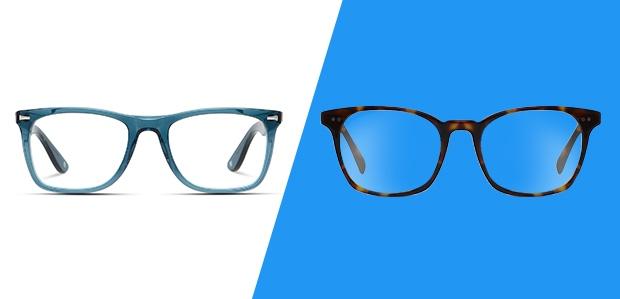
Most frames are designed with high nose bridges in mind, so if you do happen to have a low bridge you’ll need to work a little harder to find your perfect frame. However, at GlassesUSA.com you can easily find a variety of great options for all bridge types.
Nose pads are a great way to get around the bridge issue because these can give you extra support on your face — even if you have a lower nose bridge. In general, there are two types of nose pads: integrated nose pads and adjustable nose pads. Integrated nose pads are usually added to plastic frames for a more versatile fit and to help ensure that the glasses don’t slide off. While integrated nose pads provide extra support, they cannot be adjusted to optimize the fit.
Adjustable nose pads are common with metal frames, but can also be seen in some plastic frame styles. The benefit of adjustable nose pads is the fact that these can be the fact that these can be customized to fit your face shape. Whether you have a high or low nose bridge, adjustable nose pads can be drawn in or pulled apart to ensure a great fit.
Whatever your nose bridge size, finding the perfect pair of glasses is easier than ever.
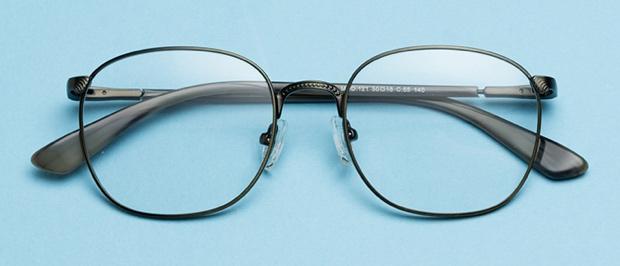
If you wear glasses, the chances are that you have worn more than one pair of ill-fitting specs. Whether your wire frames pinch your face or your plastic frames slide down your nose, glasses that don't fit can cause real frustration. In fact, many glasses wearers aren't even aware that their glasses don't truly fit their face and lifestyle. Fortunately, there are a few key signs to look for when exploring to find that perfect fit. Here are the top 3 signs that your glasses don’t fit:
Many people consider glasses that move when they do just a part of life, but this couldn't be further from the truth. If your glasses fit correctly, they should stay put even when you move your head — no matter the activity. Whether you're killing it during a workout or reading a book before bedtime, your glasses can and should stay where you put them.
On the flip side, your glasses should never pinch your face or cause you discomfort. Glasses that fit should feel snug on your temples and nose, but should never leave a mark on your skin. They shouldn't move when you smile, and they should never rest on your cheeks. If your cheeks bump into your glasses, then they probably need to be adjusted. And if you find yourself popping analgesics to get through the day, take a look at your glasses. Improperly fitted glasses can cause headaches.
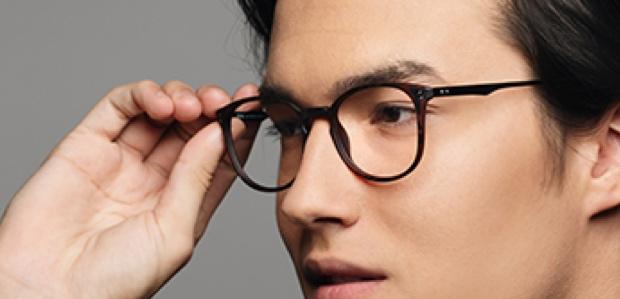
One of the biggest frustrations glasses-wearers face is how to keep glasses from sliding down their nose and face — but there is a solution to this problem. One of the most common reasons why glasses keep sliding down is that they don't have the right curve behind the ear. A properly fitted nose bridge will also help you achieve the perfect fit without pinching or slipping. Those with a low nose bridge can benefit greatly from low bridge fit glasses.
Now that you know how to spot an ill-fitting pair of glasses, here’s how you can find one that sits just right:
Nose bridge width is the distance between the lenses from inside of one lens to the inside of the other. In other words, the nose bridge is the part of your glasses that wraps around or arches over your nose. The main culprit of improper glasses fit is often a nose bridge that is not the right size for the wearer. In fact, many glasses-wearers have a low nose bridge that their glasses are often not made to accommodate. Fortunately, there are options for individuals with glasses that slide down your nose. There is a whole category of glasses, called ' low bridge fit glasses,' made especially for those with low nose bridges. If you're experiencing the signs that your glasses don't fit, consider low bridge fit glasses.
If you keep wondering how to stop glasses from sliding down your face, then your glasses are likely not correctly fitted. We provide a wide range of articles to help our mkt-low-bridge-customers know more about everything there is to know about glasses, styles and matching them to your own features and preferences. Discover more here >
Shop Low Bridge Fit Glasses